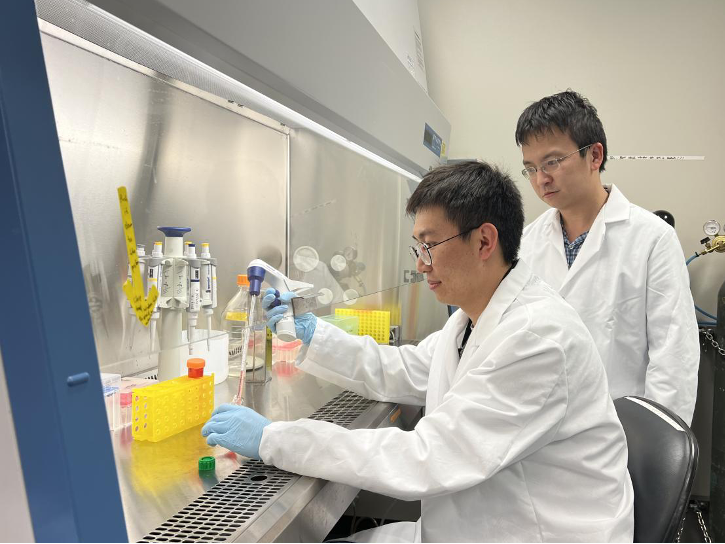
A new ultrasound technology developed by researchers from The University of Texas at Austin can activate drugs delivered to targeted cells or parts of the body, a leap forward in the ability to control interactions between molecules for enhanced treatments.
The research team developed hydrogen-bonded organic frameworks that can be programmed via the chemical structure of the hydrogen monomer and ultrasound. They created a visualization model to show the mechanochemical scission, or severing of bonds between the hydrogen frameworks, using only sound waves through ultrasound to deploy the treatment at the right time and place.
“We aim to make the experience easier for patients through these non-invasive techniques while simultaneously improving the accuracy and effectiveness of treatments,” said Huiliang “Evan” Wang, assistant professor in the Cockrell School of Engineering’s Department of Biomedical Engineer and one of the lead authors of the research published in the journal Nature.
In experiments, the researchers used the designer drug clozapine N-oxide, and embedded it into nanoparticles of the hydrogen-bonded organic frameworks. These nanoparticles were activated using focused ultrasound to release the drug and control specific neuronal activity in the deep brain.
The ability to non-invasively and precisely control drug activation within deep tissues opens new avenues for treating neurological diseases and other issues. The technology could also provide a non-invasive method for understanding brain processes.
The precise control of neural activity could lead to new treatments for neurological conditions such as depression, anxiety and Parkinson’s disease. Targeted drug delivery to tumor sites could also improve the efficacy of chemotherapy while minimizing side effects. Ultrasound-triggered local anesthesia could provide relief for chronic pain sufferers without the need for invasive procedures.
Advanced drug delivery methods represent a key frontier in medical research. These technologies can improve the efficacy of treatments through precise targeting and protect healthy tissue from exposure to harmful side effects. It also reduces the burden on the patient, as traditional methods require painful injections or surgeries with recovery periods and the chance for complications.
The team will continue to refine the technology as they choose which diseases and conditions to target. And they will begin discussions with the U.S. Food and Drug Administration on the next phase of testing.
“We aim to advance this technology into clinical trials, with a current focus on applying computational methods to design the ultrasound-programmable hydrogen framework further for drug delivery.”
Huiliang “Evan” WangAssistant Professor, Cockrell School of Engineering
The full project team includes Wenliang Wang, Kai Wing Kevin Tang, Ilya Pyatnitskiy, Xiangping Liu, Weilong He, Jinmo Jeong, Ju-Chun Hsieh, Anakaren Romero Lozano, Binita Shrestha, Noah B. Stern, Brinkley Artman and professor and chair Tyrone Porter of the Department of Biomedical Engineering; professor Graeme Henkelman, Xi Shi and Wenrui Chai of the College of Natural Sciences’ Department of Molecular Biosciences; Nicole Hoefer and David. W. McComb of The Ohio State University’s Center for Electron Microscopy; Wei Zhou of the National Institute of Standards and Technology’s Center for Neutron Research; and Yanshu , Banglin Chen and Yi Xie of UTSA’s Department of Chemistry.
